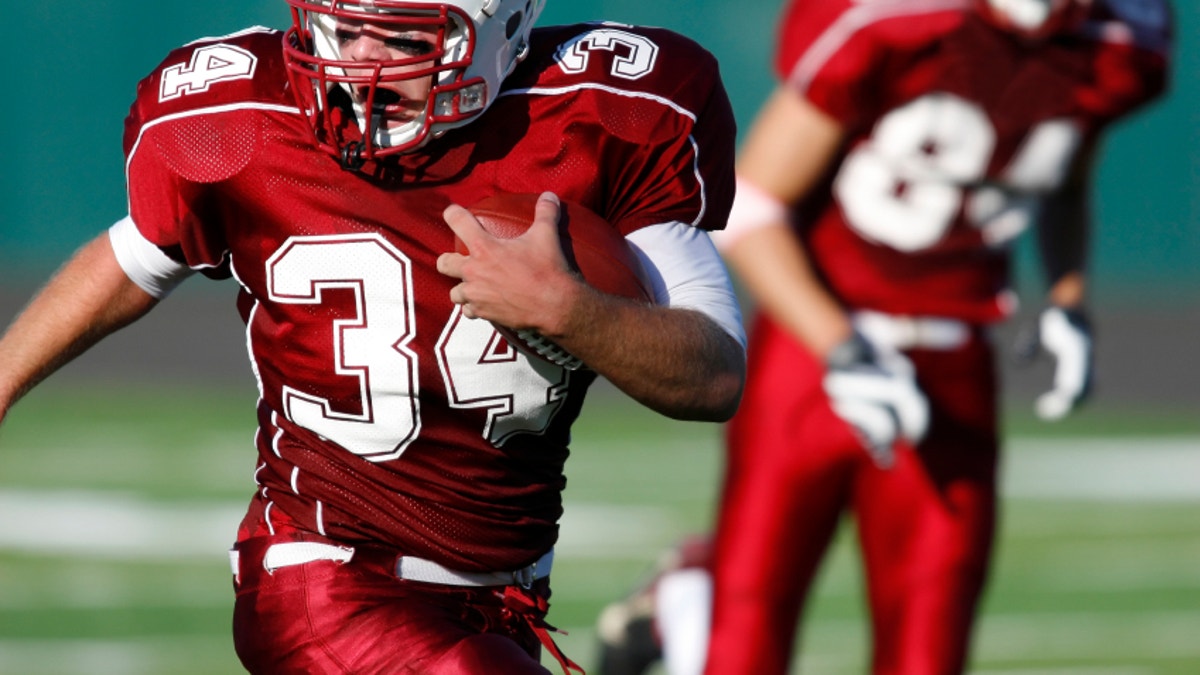
Heat stroke and heat exhaustion most often affect college football players during the first two weeks of preseason practice and the risk goes up with higher temperatures, according to a new U.S. study.
"Heat illnesses such as heat stroke, heat exhaustion and exertional hyponatremia (most often from consumption of too much water) can be catastrophic if not recognized and treated appropriately," said lead author Bud Cooper, program director for Athletic Training and Strength/Conditioning at the University of Georgia in Athens.
"When acclimatization measures are implemented, the athletic trainers and others on the sports medicine staff can help ensure a catastrophic event does not occur," he told Reuters Health by email.
Athletes who are sickle-cell trait positive, have a previous history of heat illness or other conditions may be more vulnerable to heat illness, Cooper added.
For this study, researchers used data from the four National Collegiate Athletic Association (NCAA) football seasons between 2004 and 2007, with schools divided into six regions and players identified by position, equipment worn and type of heat illness.
They calculated the number of reportable heat illnesses diagnosed by an athletic trainer or that caused a player to miss a practice between August 1 and September 30 each year. A portable weather monitor recorded environmental data daily at each site.
There were 553 exertional heat illnesses, three-quarters of which were heat cramps and the remaining quarter were a combination of heat stroke and heat exhaustion. There were no cases of heat stroke.
Heat illness was by far most common in the Southeast region, which accounted for 446 cases. More than 90 percent of cases happened during the first 29 practice sessions, with most recorded in the first 15 sessions.
In terms of timing, heat illness was most common in the first three days of practice, and when two-a-day practices began on day six of the preseason, there was an increase in heat illness on days seven and eight, according to the results in the Journal of Athletic Training.
An environmental measure that incorporates temperature, humidity, wind speed, sun angle and cloud cover - known as wet bulb globe temperature (WBGT) - ranged from 70 to 90 degrees Fahrenheit during the study periods. Heat illnesses per 1,000 player-practices increased from effectively zero when WBGT was 70 degrees to almost 1.5 when WBGT was 82 degrees or greater.
"All types of heat illness are most common in the first day or two," said Dr. Barry Boden, partner at The Orthopaedic Center in Rockville, Maryland, who was not part of the new study.
The 82-degree cutoff for WBGT is somewhat arbitrary, but higher temperatures mean greater risk for heat illness, Boden said. But it is true that heat illness is one of the most preventable types of illness, and this study reinforces the importance of prevention, he said.
"Thus these first two weeks of practice are critical in allowing for the gradual acclimatization to the environmental stress of late summer," Cooper said.
Current NCAA heat acclimatization policy for football requires athletes to gradually increase how much equipment they wear until full equipment is allowed on practice day five, he said. "This gradual exposure to the elements and amount of equipment worn allows the athletes time to adjust to the environmental conditions," Cooper said.
"While coaching staffs certainly know that hot environments are detrimental toward the performance and health of their athletes, they often do not have the proper education to recognize the signs/symptoms of heat illness and which protocols are appropriate to best address acclimatization," he said.
"Medical professionals such as athletic trainers have the educational background and clinical experience to institute preventive measures and they know the proper methods for the recognition and treatment of heat illness," he added.
For players, getting adequate rest, maintaining body weight and hydration levels, and proper knowledge of what a heat-related illness looks like can greatly reduce their risk, he said.
